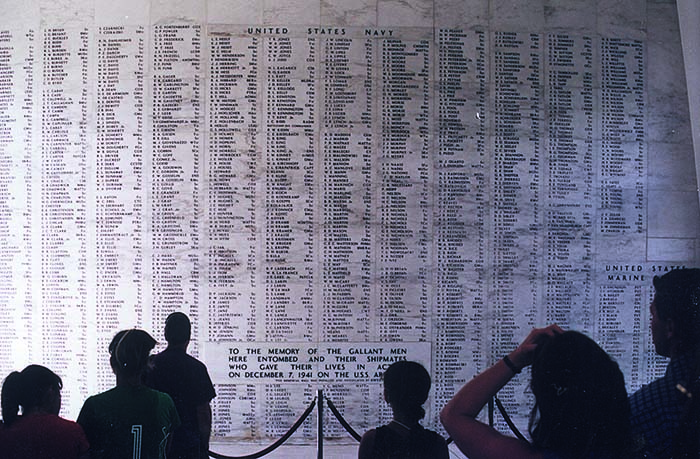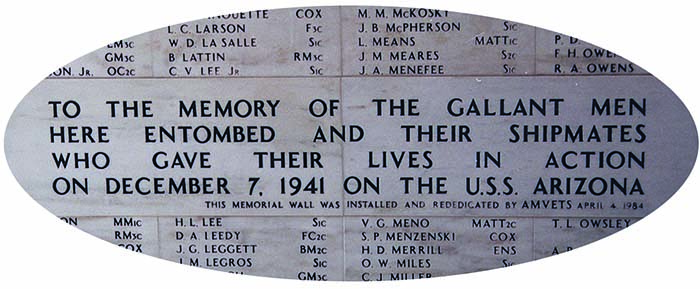By Jeff W. Zimba
There is no way we can devote an issue of Small Arms Review to the Pacific Theatre without paying our respects to those who lost their lives on December 7, 1941 on, and around the Navy Base at Pearl Harbor. The launching point to our entrance in WWII, the attack on Pearl Harbor was rated the #3 News Story of the Century by a nationwide poll of American journalists. The only stories to top this event were the atomic bomb, and man landing on the moon.
Around 7:53 AM on December 7, 1941, Japanese Commander Mitsuo Fuchida was in his bomber some ten miles out from Pearl Harbor. From his altitude he was able to easily see the U.S. Navy base in its tranquil and quiet state, and he radioed the Japanese carriers those now famous code words Tora! Tora! Tora! confirming that the attack was indeed a strategic surprise.
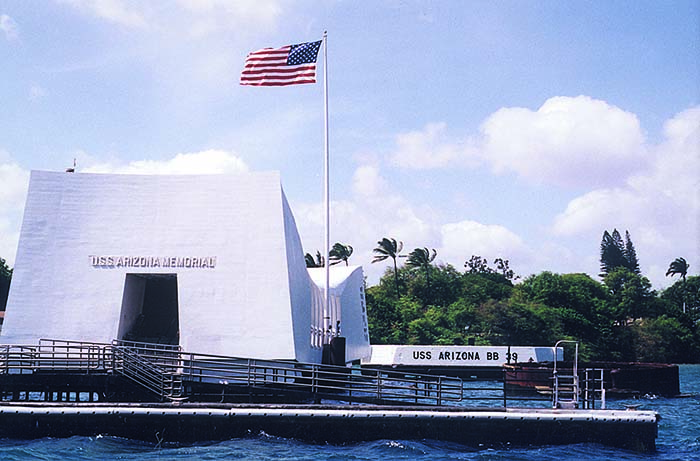
Entrance to the USS Arizona Memorial.
It was approximately 8:10 AM when a 1,760 pound armor-piercing bomb penetrated the deck of the USS Arizona and exploded in the foreword ammunition magazine. Less than nine minutes following the massive explosion the ship was sunk, bringing 1,177 of her crew to the bottom with her.
Numerous other ships, including the USS California, the USS West Virginia, the USS Utah, the USS Maryland, the USS Tennessee, the USS Nevada and the USS Pennsylvania were either sunk or subject to enormous damage during the same attack. The death toll was high on, and around the base.
At the very same time, other military installations on Oahu including Hickam and Bellows Airfields were being attacked. Numerous planes were destroyed during these attacks and many additional lives were lost, as well as our effective ability to defend ourselves.
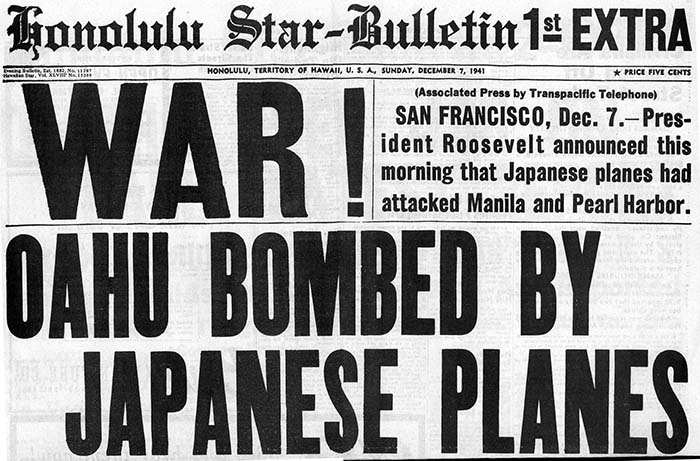
Copy of the front page of the Honolulu Star Bulletin announcing the attack on Pearl Harbor.
Although the sounds of the attack could be heard for miles around, along with the air-raid sirens, it was the feeling of many of the local civilians that the attack they could hear was simply another training exercise. Many went about their normal daily business that morning, including going to school and to work, only to learn of the attack later. Some civilians in Honolulu were not so fortunate, as a number of improperly fused American anti-aircraft shells fell on them. At the time they were thought to be Japanese bombs.
After the Army Air Corps had been able to take off in a few U.S. fighters and start shooting down enemy planes, the attack would soon come to an end. At 10:00 AM, the remainder of the second Japanese wave flew to the North and one of the most famous attacks in history came to an end. From this point, the American citizens, once deeply divided on the issue of our involvement in WWII, forged a commitment to defeat Japan as well as their axis partners.
The USS Arizona Memorial in its current configuration was completed in 1961, and dedicated in 1962. It is a white, 184 foot-long structure that sits directly above the sunken remains of the USS Arizona, spanning the mid-portion of the ship without actually touching it. The design of the memorial, with the structure being lower in the center than at the ends, is supposed to symbolize initial defeat and our ultimate victory. The seven openings on both sides and the ceiling of the memorial simulate the shape of 21 soldiers at “Parade Rest” keeping a watchful eye on those who lay in the tomb below.
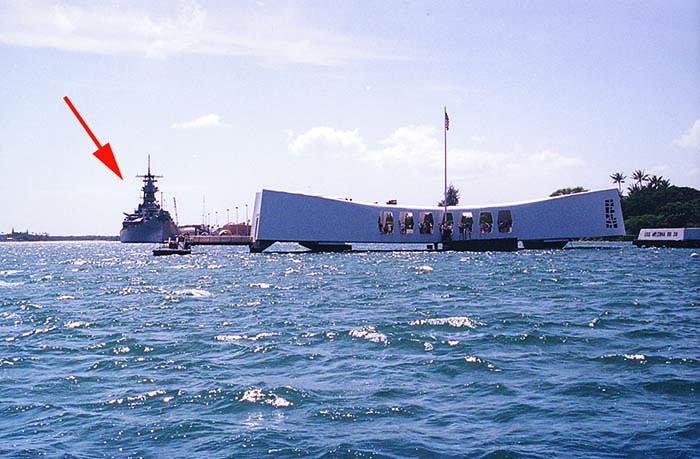
The USS Arizona Memorial in the foreground, appears to be under the watchful eye of the USS Missouri, commonly known as the Mighty Mo (arrow).
From the memorial floor, the remains of the ship can be easily seen under the beautiful, blue water of Pearl Harbor. Close examination of the water under the memorial will periodically reveal colorful floating circles of oil still leaking from a hatch right beside the base of the #3 gun turret.
The memorial itself has three sections. First is the receiving area and assembly room where you initially step onto the memorial from the harbor. The center of the memorial was designed for ceremonies and general observation. This is the long area where you will see the large openings. It is in this center portion where you can view the USS Arizona as it lies in the waters of the harbor below. The third area of the memorial is the shrine room, where the names of all who were killed are engraved and immortalized on a marble wall. Below this wall you will see many Leis, placed by visitors of the memorial as a token of respect.
As you arrive at the visitor center, you must first stop at the ticket counter and pick up a tour ticket. These are free of charge and will indicate the time of your tour. While you are waiting for your tour, you can browse around the museum and bookstore. At the time your tour is supposed to start, you will be directed to a theater across from the museum, and given a briefing by a member of the National Park Service. This briefing will be followed by a 20 minute documentary film about the attack on Pearl Harbor. The footage is original and very powerful. As soon as the film is over, you walk to the boat landing, and a United States Navy shuttle boat will take you out to the memorial. You will return on the same shuttle boat when they return with the next group of visitors.
Anyone who visits this museum and memorial will be treated to an amazing historical view, over and above what I have described so far. As you head from the boat launch to the memorial, just beyond the memorial it you will notice another major player in the Pacific theatre. The USS Missouri, commonly known as the Mighty Mo has been assigned to Pearl harbor as its new resting place. As history would have it, the Mighty Mo symbolizes the end of our involvement in WWII as this is where the surrender documents were signed by the Japanese. It is directly behind the Arizona Memorial and in one quick snapshot, you can capture symbols of the beginning and the end of our involvement in WWII.

The foundation for the #3 gun turret on the USS Arizona sticks up above the water beside the memorial.
USS Arizona Memorial
1 Arizona Memorial Place
Honolulu, HI 96818
(808)422-2771
| This article first appeared in Small Arms Review V4N3 (December 2000) |





